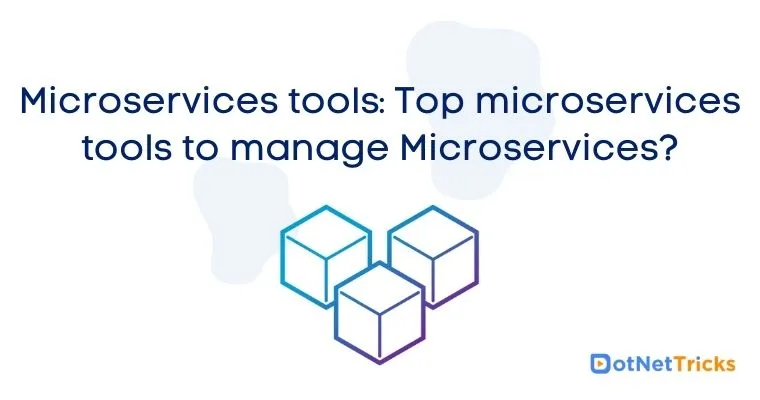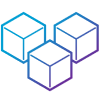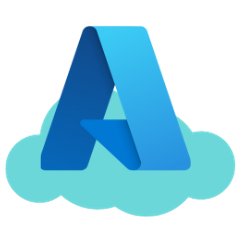Microservices tools: Top microservices tools to manage Microservices?
Microservice adopts an architectural style for developing huge complexes as well as simple applications for businesses. The working mechanism is such that a huge complex application is segmented into multiple tiny services that are maintainable. Each service possesses a single responsibility and they are loosely coupled with other services that communicate through different protocols. For the efficient working of microservices, there are various components required. One of the most vital ones is microservices tools. Let’s first understand what microservices tools are:
Microservices Tools:
For the development of applications using microservices architecture, the developers require certain tools and technologies. They assist to build as well as monitor such microservices. Moreover, these services are tiny, discreet, unique, and easy to manage. They work on the principle of single service single responsibility. However, based on maintenance and development, the architecture can be complex.
In simple terms, microservices tools are an assortment of diverse tools and technologies with different functionalities. They are utilized in diverse stages of the development of an application. Moreover, they assist the developer to work with great simplicity. These tools are implemented with pre-defined algorithms, functions, and user-friendly GUI. Furthermore, different enterprises are already working on developing these kinds of microservices tools that are user-friendly.
Since the working of microservices adopts an architectural style, using one tool for the whole workflow is inadequate. In the microservices interview questions and answers, some candidates are asked questions on microservices tools.
So, let’s get into the details of prominent microservices tools for managing microservices:
- Operating System:
One of the most vital tools essential for managing microservices is the operating system. When you go through the Microservices course, this tool will be discussed. When the matter comes to building an application, setting up an appropriate foundation is important. This is possible with the help of the operating system. For building applications through the microservices approach, Linux is the prominent choice. Using Linux containers, it offers a self-contained execution environment. Furthermore, it allows you to arrange small to large services like storage, networking, and security.
- Programming Language:
The development of microservice is through the use of various programming languages and technology. This is essentially the plus point of microservice development. The choice for the programming language relies on the requirements of the business function. Varied service in a single application can make use of various programming languages and techniques that offer flexibility to the developers. The most famous programming language for microservices is JDK (Java). It is extensively used for microservice development in Elixir and spring boot.
Spring Boot streamlines the development of REST-based microservices through the Spring Boot frameworks. There are very few code lines in the same. Elixir is popular as a general-purpose programming language and it executes on the Erlang virtual machine.
3. Architectural Frameworks:
Microservices is an architectural style on its own. This is why an architectural framework is an essential tool for managing microservices. Such frameworks are used with diverse technologies to deploy applications. There are 2 well-known architectural frameworks i.e. goa and Kong. The first one offers an approach to create REST APIs as well as microservices through Golang. The second one is widely used for ready-to-deploy plugins to enhance the deployment and development of microservices.
- Build and Assembly:
Microservice architecture is based on the assortment of services that can be huge in quantity. Each service functions as a discrete project that needs distinct build and deployment. The idea behind the same is to create a deployable jar/war/ear. For the same, the project developers have to use a build tool like ant, maven, and Gradle. These tools offer multiple plugins to personalize the build i.e. an assembly.
With the use of the maven assembly plugin, it is possible to externalize the properties out of the jar. As a result, it is easy to directly alter the configuration from the corresponding properties file. No need to rebuild the jar.
- Toolkits:
When you go through in-depth detail of microservices tutorials, you will get familiar with the toolkits. Fundamentally, a toolkit is a collection of tools suited for some specific purpose. Within microservice architecture, you can create diverse types of applications. The tools in the toolkits useful for microservices management are fabric8 and Seneca.
The fabric8 works as a platform-as-a-service tool. It provides the developers with a configuration management system via Git. Seneca is broadly used for creating message-based microservices and processes. It works based on Node.js.
- Tools for API Management & Testing:
Every microservice possesses its own API for communicating with the rest of the services. For that, the API management and testing prove beneficial. This is since every API existing in the system should be efficiently managed and verified to present the optimal results.
Postman is recognized as an API development set enabling you to effortlessly execute API tests based on UI. It simplifies the exploration of the RESTful API resources. Using Postman, you can pass HTTP requests for development and testing. Another great tool for API management and testing is API fortress. It works as an API test and health tool that mechanize the tasks like health monitoring, load testing, and functional testing. Essentially, it is a code-free tool built using contemporary API architectural practices.
- Tools for Monitoring:
After the application is built, the next vital step is to monitor its functioning. Tools like Prometheus and Log stash are useful for the same. The first one allows envisaging monitoring information being used and the support for the duration-based tracking for irregular patterns to be recognized. It is basically an open-source tool that collects monitoring information. Another tool for monitoring is log stash. It is an open-source tool using which you can analyze the logs. It allows you to stash, consolidate and convert data.
- Tools for Team Building:
The application development teams generally need to work on the changing requirements. It is vital to do the same for adding value in the implementation of microservices. To obtain common business objectives, decent cooperation is inevitable among the team members. A few of the popular team management tools to consider are Slack and Jira.





